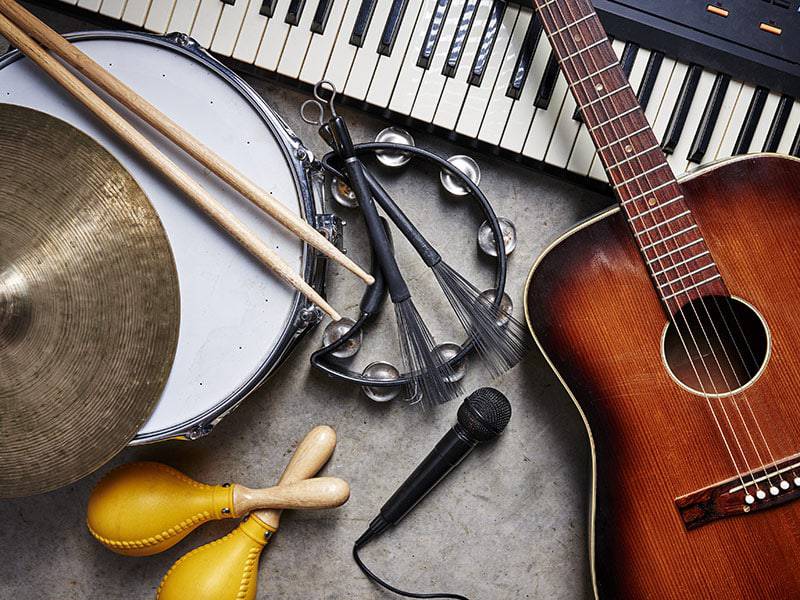Music Innovations That Blend Tradition with Cutting-Edge Technology


El Valle Grita – Music is constantly evolving, yet the most fascinating trends today often come from blending ancient traditions with modern technology. From orchestras incorporating digital instruments to folk musicians experimenting with AI-generated harmonies, artists are pushing the boundaries of what music can be. This fusion not only preserves cultural heritage but also reinvents it for a new generation, creating sounds that feel both familiar and completely fresh.
“Read More: US Department of Commerce Blocks DeepSeek, Strict Privacy Policy in Europe”
AI-Assisted Composition Breathing New Life Into Classic Melodies
Artificial intelligence now helps musicians reimagine old compositions with surprising variations. By analyzing historical sheet music and performance styles, AI can generate new arrangements that stay true to traditional scales while introducing modern twists. This gives composers a toolkit for innovation without losing the soul of the original piece.
Hybrid Instruments Combining Acoustic Warmth and Digital Precision
Instrument makers are creating hybrids that blend centuries-old craftsmanship with advanced electronics. Violins equipped with sensors can modulate tone in real time, while pianos now feature built-in MIDI systems for seamless recording. These designs keep the tactile feel of traditional play while expanding sonic possibilities far beyond the original range.
“Read About: Exciting Events Festivals You Shouldn’t Miss This Year”
Sampling Techniques Preserving Rare Cultural Sounds for Modern Tracks
Producers are traveling to remote regions to record authentic sounds—from ceremonial drums to unique bird calls—and integrating them into electronic tracks. This preserves endangered soundscapes while introducing them to global audiences. Sampling in this way acts as both an archival effort and a creative expansion of world music.
Live Performances Enhanced With Augmented Reality Visuals
Artists are using AR technology to transform concerts into immersive experiences. Audiences wearing AR glasses see interactive visualizations that respond to the music in real time. This blend of sound and sight turns traditional performances into multisensory events that deepen audience connection.
Algorithmic Improvisation Expanding the Boundaries of Jazz and Folk
By combining real-time data analysis with generative algorithms, musicians can improvise alongside digital partners that adapt instantly. In genres like jazz and folk, where spontaneity is key, this technology adds another “musician” to the ensemble—one that never plays the same thing twice.
High-Fidelity Recording Restoring Vintage Instruments to Modern Clarity
Advanced microphones and spatial recording techniques allow artists to capture every subtle nuance of historic instruments. This not only improves audio quality for listeners but also ensures the preservation of these unique tonal characteristics for future generations. Old lutes, harpsichords, and sitars are finding new audiences with crystal-clear sound.
Interactive Music Apps Teaching Traditional Skills Through Play
Developers are creating mobile platforms that teach complex traditional techniques in game-like formats. Users can practice scales, rhythms, and ornamentation while receiving instant feedback. This makes learning centuries-old skills more accessible and appealing to younger musicians.
Modular Synth Integration Revitalizing Ancient Rhythmic Patterns
Composers are programming modular synthesizers to replicate and evolve rhythmic structures found in indigenous music. These loops can then be layered with modern beats, creating hybrid grooves that feel both rooted and futuristic. The approach has gained popularity in experimental electronic scenes worldwide.
Collaborative Platforms Linking Global Musicians in Real Time
High-speed internet and low-latency tools allow artists from different continents to perform together live. This makes it possible to blend instruments and styles that would rarely meet in the same physical space, producing cross-cultural works that expand the definition of traditional music.
Eco-Friendly Instrument Production Preserving Both Sound and Planet
Luthiers and drum makers are now using sustainable materials and ethical sourcing to craft their instruments. This ensures that future generations can continue to play traditional instruments without depleting natural resources, linking cultural preservation with environmental responsibility.